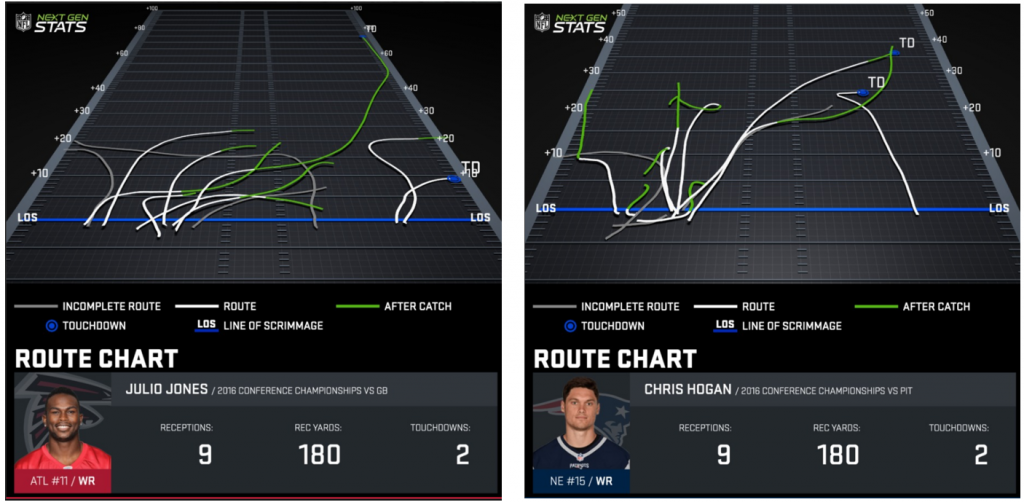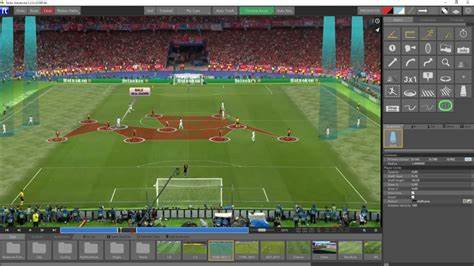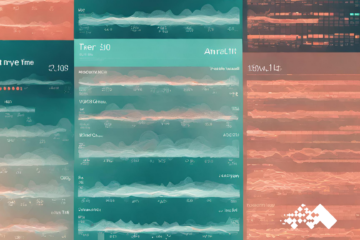Sports AI Blog Series | Gameplay Analytics | Post #4 in our blog series examining how sporting organizations can leverage modern data tools and technologies to improve their bottom-line and game product.
- Post #1 > The Promise of Biometrics Analytics
- Post #2 > ML Driven Customer Segmentation
- Post #3 > Predictive Sports Ticketing
Introduction
It is no surprise that in order to improve something, its performance has to be measured, quantified, and compared. This concept is equally true for organizations and individuals, and is particularly significant in sports, whether discussing an individual athlete or an entire sports team. The new world of artificial intelligence (AI) and data science opens entirely new levels of opportunity for teams to measure, quantify and improve performance through gameplay analytics.
With the recent explosion of sensor technology, there are numerous ways to measure gameplay in sports, using video, GPS, accelerometers and more. Many devices are now capable of simple integration into data collection systems through an internet-of-things (IoT) framework that allows vast amounts of data to be recorded in an automated fashion. The challenge, then, is to quantify these oceans of data in a meaningful way and extract metrics, comparisons and models that provide value to improve gameplay.
Earlier in this blog series, we have discussed how modern approaches to technology and data science are changing how sporting businesses understand their customers , optimize supply to demand and price their offerings. In this post, we will explore how these same technologies and methods can apply to athlete and gameplay analytics.
Why Gameplay Analytics?
In team sports, optimizing gameplay is fundamentally about understanding how and where players work effectively, and where they do not. This is similar, in principle, to many other optimization problems, such as routing traffic, coordinating supply chains, and managing service delivery. These problems all have spatial qualities, like the position of players on the field or the position of an aircraft on a map. These problems involve complex coordination of many agents, for example, teammates and their relative positions, or the relative positions of a service delivery fleet. Finally, each agent in the problem will have specific states and characteristics that will be critical to optimization. For teams, this could be whether a teammate is open to receive or how effective they are at making passes to others. These athlete-specific characteristics are not always gleaned intuitively and may require a lot of data analysis to uncover.
So, with all this complexity, how can we untangle team dynamics to improve performance? Mosaic has shown that analytics and data science can help guide decision-making in complex situations like those mentioned above. From the management of aircraft traffic under ever-changing conditions to the forecast of shipping demand in order to predictively configure a trucking fleet, data science approaches to optimization have been able to deliver results that have improved performance in complex scenarios. We believe the same promise exists in the application of these methods to team sports.
Leveraging AI and Automation
It is easier than ever for teams to collect vast amounts of detailed data from their practices and games. However, gameplay analytics can be time-intensive, requiring a great deal of manual effort to collect, organize, clean and tag the data for further evaluation. Data sources can include vast collections of gameplay footage and player characteristics and statistics, to real-time feeds from IoT devices embedded in player equipment or on the field of play.
While device providers and software developers have made the collection and storage of data easier than ever, there is still a significant challenge in cataloguing and quantifying important features from these massive data sets. Take video footage, for example. In order to interpret important events from a game, sequences of frames have to be tagged with relevant annotations or descriptions, such as when and where a play started and ended, recognizing the players involved, or even calculating metrics such as speed of movement. In order to make use of the data, these annotations may have to be manually created by a trained analyst.

Novel techniques in AI and automation can significantly decrease the amount of manual effort required in these tasks. The use of computer vision has accelerated dramatically in recent years, and this suite of techniques holds promise for automating the analysis of huge quantities of photos and videos. By training a machine learning (ML) system to recognize important features of gameplay footage, the video could be pre-processed to surface important segments from the game, almost like an auto-generated highlight reel. This frees up valuable time for the analyst to focus on the plays and events that matter most, and over time these ML systems can continually be improved to zero in on the information that a team needs to know.
A Step Beyond Traditional Analytics
After assembling a massive data set and applying automation to quantify important features from the data, a significant hurdle remains in the application of advanced modeling to derive predictive and prescriptive insights. This may require stepping beyond traditional analytics to apply concepts from AI, ML and advanced statistics, and a seasoned data scientist can be a powerful asset for this part of the journey.
Consider an analogy between the optimization of sports team performance and the performance of a dispatch team delivering onsite service to customers. While there are obvious differences between these situations, there are many similarities. Customer service agents have characteristics that define their cost, their unique skills and their level of competency, similar to athletes. Understanding the position of agents relative to one another and their ability to easily navigate between locations is not unlike understanding the positioning of players on a field and the obstacles, such as opposing players, that may hamper their movement. In this case, solving the problem of moving service agents, as a team, to customer locations in a coordinated and effective fashion is not unlike solving the problem of positioning players, as a team, to improve their overall performance on the field of play.
In solving a gameplay optimization problem, data scientists will need to consider important variables such as athlete specific factors, opposing team factors, and characteristics of discrete events during the game. In addition, “costs” can be defined in terms of the efficiency of movement around the field of play of the ball or puck, and “rewards” can be defined in terms of performance metrics such as yardage gained, shots on goal, and others. Techniques drawn from state space modeling, as an example, can be applied to understand how states of the game can produce positive outcomes for the team. Using this fundamental understanding of team performance, scenarios can be simulated and plays can be optimized based on information from real-world game data.

Conclusion: Better Measurement and Analysis is a Competitive Edge
Modern technology, from sensors and IoT devices to automation to data science techniques, is providing an engaging platform for sports teams to launch a new era in performance measurement. Gameplay data are a trove of information about how athletes are acting and reacting in real situations, and there are real benefits to be gained by mining this information at every level, from the athlete to the entire team. In the modern age, the team that can measure and understand itself through its own data will have the competitive edge.


